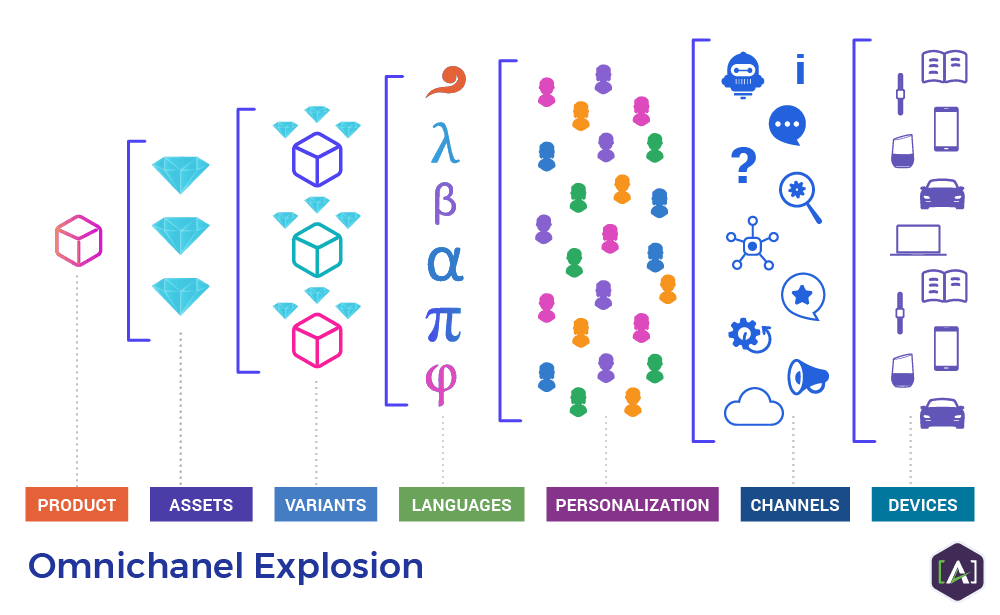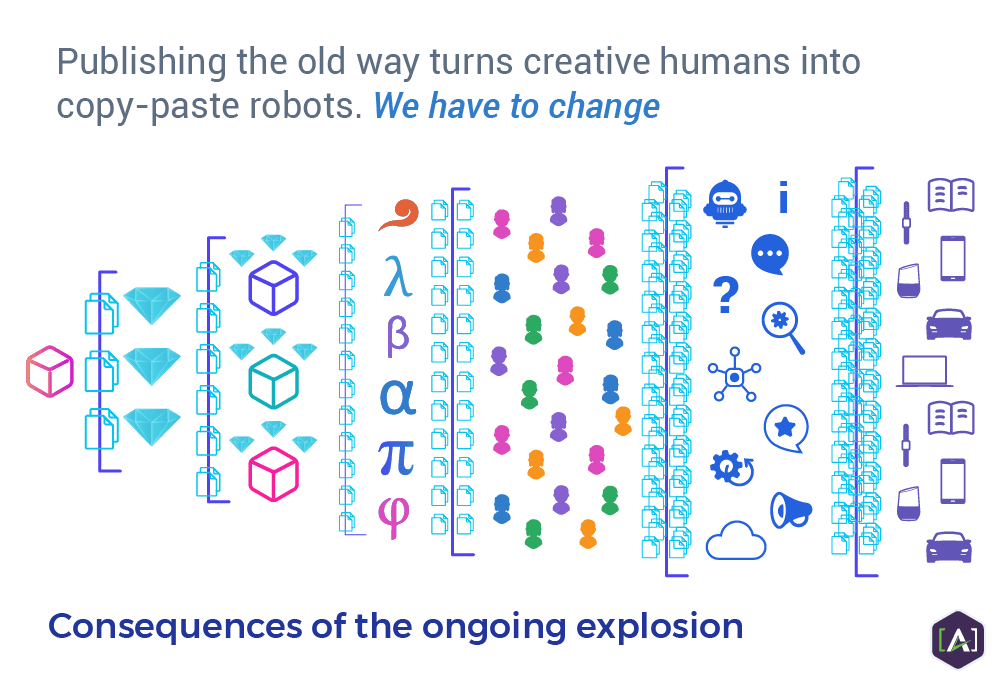This is a time of profound soul-searching for enterprise publishers as industry revisits how everything is done.
For the past 15 years, even within technical communications alone, teams have needed to reinvent themselves multiple times. Now the industry again finds itself amid reinvention, as old systems bog down and traditional organizational charts prove themselves outdated. The new world order of content has yet to arrive, and this intermediary period has motivated many in the industry to introspection, experimentation, and renovation.
Many people within content-producing departments feel they are “dog-paddling” on a wave of unfathomable and unconstrained content factor growth. In [A] findings, echoed in a 2018 Forrester study sponsored by SDL (now part of RWS), internally reported frustrations include (Forrester, 2018):
- Inability to keep up with the growing appetite for content
- Inability to keep up with support for new content formats/types
- Complex workflows and approval processes
- Lack of automation/mostly manual processes
- Content delivery that is poorly coordinated across teams or business units
- Inability to keep up with the growing volume and complexity of content delivery
- Lack of structure/definition around content translation
Due to the nature of
productive content, which forever seeks new channels, there are thousands of variants of content renderings for every new surface and digital space that emerges. What used to be finite documents are now many versions of articles, campaign landings, search results, social promotions, emails, product information resources, promotions, offers, commerce stores, syndicated publishing consumers, support topics . . . and endless copies of each.
As illustrated in Figure 1, at least seven (7) factors of content dimension drive content variation from destination to delivery.

Continuing to publish in the traditional manner turns intelligent, creative humans into copy-and-paste robots moving content from one format to another, one variant to another, one language to another, one channel or system of record to another, and from one part of the workflow to another. As Figure 1 shows, the sheer scale of manual touch points in common content management is frightening. We can easily become slaves to manually inserted content.
Why is there so much manual transformation and insertion? The simple fact is that, today, many enterprises still have neither standard schemas nor shared tags or terms. Content often resides in product-based or divisional silos with entirely unique content management and practices.
Unnecessary manual and unwieldy steps, like copy/paste, not only deplete creative resources, they insert “static” content that will not update automatically when source files are modified. Publishers and content stakeholders from different divisions copy/paste, often from multiple versions of the same static source files. Many managers still attempt to control semantic terms in spreadsheets rather than creating centralized systems of record for sharing these critical tagging standards.
An insidious amount of “toxic” static content can gradually creep through an overall treasury of content assets like fast-growing ivy on an old brick building; the ivy will gradually dissolve the mortar to the point that the building’s integrity becomes threatened. Fresh, updatable content assets keep an organization’s communication integrity intact and ensure the ability to weather the storms of change.
Human beings within publishing teams should be creative, intellectual, value-adding, and problem-solving participants, not automatons. Therefore, workflows should embrace automation and machine-support wherever possible, so humans can focus on creative productivity. Overdependence on manual labor touchpoints across the many vectors of content versions can lead to the robot “nightmare” scenario illustrated in Figure 2.

With the right guidance, and a well crafted Content Orchestration Model, you can move into a workflow and content supply chain that produces intelligent content which is both machine and human consumable.
[A] provides services and consulting in
Content Operations,
Content Strategy, and
Content Engineering.
Contact Us for a Free Consultation.